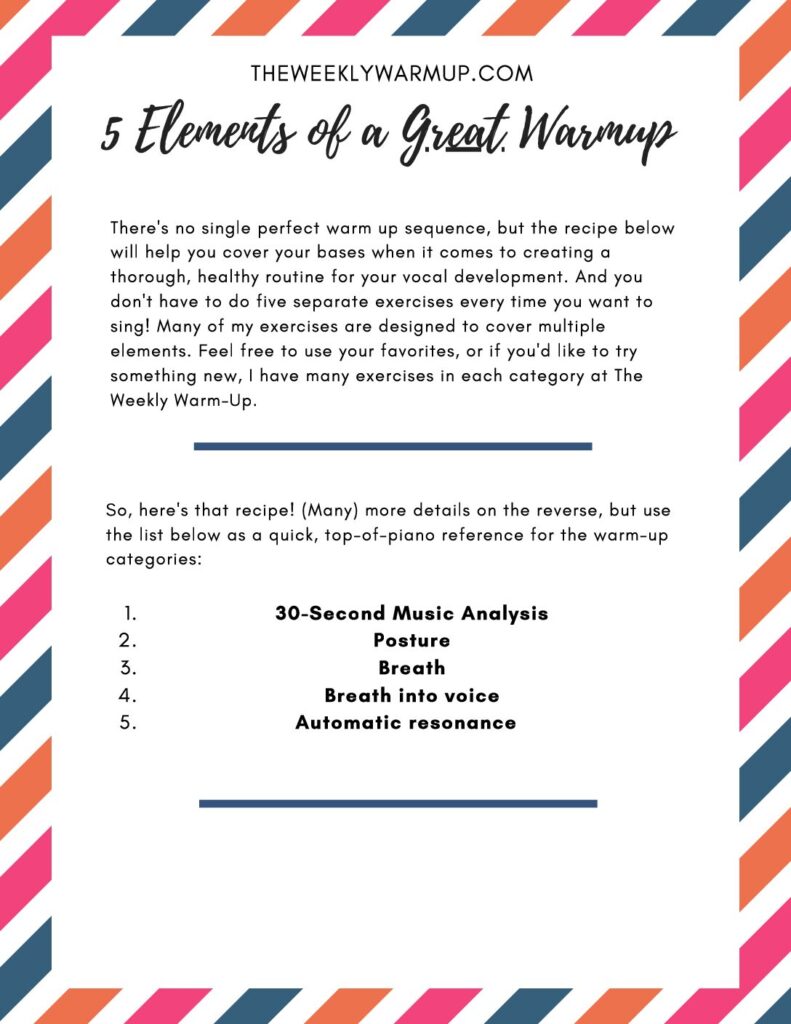Hi pals. Today’s video is a little different. If you’ve ever wondered how to warm up in the car effectively, you’ll see me doing just that, in the atmospheric lighting of the parking garage.
This video is not prescriptive, in that you probably won’t sing along with my exact routine. But I want you to see the process – how I go about deciding which exercises to do and pay attention to what’s happening as I sing.
I hope it will help you build your own warm up (whether you’ll warm up in the car or elsewhere!) with an organized, thoughtful process.
I’ll outline a simple template below, and even throw in a printable guide, but for now, here’s the video:
A Template for Warming Up
Here’s a simple process for warming up today, whether your in the car, at home, or out with the cicadas. Keep reading all the way to the end for a free printable!
- 30-second Music Analysis – Take a second to consider the music you’ll be practicing or performing today. Consider range, or particular technical challenges like long breaths or runs.
If you want a full explanation of this process, sign up for the 7-Step Practice Jump Start Series and I’ll walk you through, and give you a cute worksheet to use, too!
Then work your way down the next steps, selecting your exercises to address the points you just identified in the music analysis. - Posture – if you’re in the car, you can’t stand up, but you can lengthen your spine and use the headrest to check your head alignment. Otherwise, try the Nobble Lift.
- Breath – Re-introduce your body to the “Release in/Engage out” cycle. In the car, I don’t get a lot of dropped feeling because of the squishy seat, but I can feel my back spreading against the back rest, so you might try that!
- Breath into voice – Get the vocal cords vibrating with that free breath – a prime opportunity for an SOVT. If you want to know more about those, check out the Quiet Practice video.
- Automatic Resonance – Use a naturally vibrant sound (RRRRR, Hng, or VVV will work nicely) to bring that vibration into the vowels, which can usually use a little help.
And that’s it. The key is to tailor the warm-up to the vocal demands of the day and to pay attention while you work your way through to address the areas where you could use a little support.
And now, a bonus! I made a printable guide to designing your own great warm-up, so if you’d like a little warm-up recipe to put on your piano, here you go!

And thanks for practicing!


